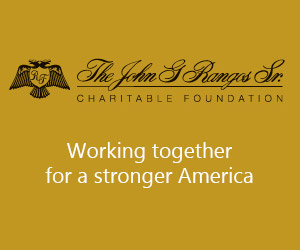- FOKION AVGERINOS – DR. IKE: Athletic Director, Youth Mentor, and Healer
- American Hellenic Institute’s Golden Jubilee Celebration
- Leadership 100 Concludes 33rd Annual Conference in Naples, Florida
- Louie Psihoyos latest doc-series shocks the medical community The Oscar–winning director talks to NEO
- Meet Sam Vartholomeos: Greek-American actor
Altar boys forever

Dimitri C. Michalakis
I visited my old church in Brooklyn recently, where I once served as an altar boy, and it pretty much looks the same: only with central air conditioning now (instead of the sauna we had to endure back then during the high holy days when the church was packed and candles were lit). The priest is a sweet man with a gift for connecting with people and I see the familiar faces of relatives who have been going to the church ever since.
In those days my mother and I lived on Parrot Place in Bay Ridge just behind the Robert Hall and near Poly Prep where all the ducks swam in the pond (my father in those days worked in Chicago and we saw him only on holidays). And perhaps to keep me out of trouble the relatives suggested I go to the church and apply to be an altar boy. I thought this was a great distinction (which it is) and I rigorously studied the Pistevon and the Pater Imon which I had to recite by heart in order to get a hearing from the priest and the head of the altar boys.
I passed the test and I was told to report for the first day on the job on a Sunday.
I took the Fifth Avenue bus which rumbled down to the church (then a faded area which has since become gentrified) and I wore my Sunday best—my suit and skinny tie and my good pair of black shoes bought at Buster Brown.
I could hear the drone of the psaltes as I entered the church and with a sense of self-importance I passed by the old ladies with their black kerchiefs who always came early and then I ducked behind the door with the icon of St. George slaying the dragon and was shown into the locker room where all the beautiful silk robes were kept: there were green ones, and blue ones, and reddish ones, and the gold ones that made us sparkle on the high holy days. I was shown how to put them over your clothes and then, most important, I was shown how to tie the sash around you so that it fit snug and kept your robe from billowing. “You want to look fat?” said the head of the altar boys to me. “You want all the girls to think you’re fat?”
And then I sat with the other boys in the anteroom next to the altar and talked about wrestling (the glory days of Bruno Sammartino) as we waited to be called on by the priest through the head of the altar boys, dressed all in black, who came whispering and gesturing frantically.
The standing was the worse. Holding the scepter raised during the endless recitation of the evangelia during the high holy days was the worse—watching the candles getting snuffed out to count down the evangelia was a mortal agony.
But then the girls did look at you when you walked down the aisle and you did have a sense of importance when you held back the crowds packing the aisle to get the antidero at the end of the service or during Holy Communion.
I watched the altar boys when I went back to my old church recently and I was very jealous.
Happy Easter!











0 comments